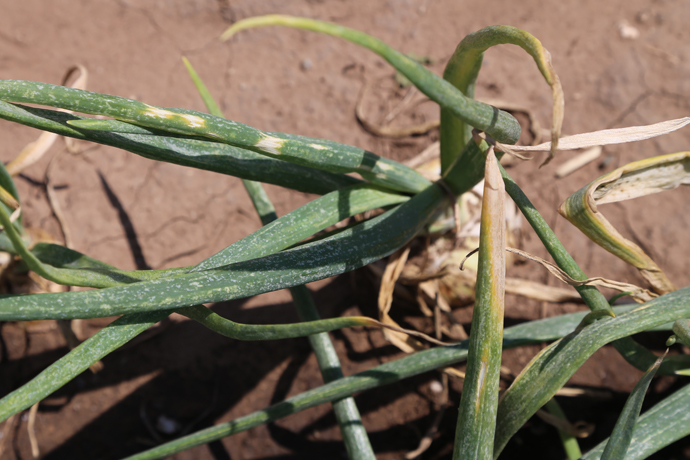Watch For Common Vegetable Diseases This Time of Year
After a long summer of growing and caring for a garden, the last thing gardeners want is to lose their plants to disease. Knowing the signs of common plant diseases and the steps to treat or prevent them is a valuable tool. Be aware of these common vegetable diseases this time of year.
Watermelon Mosaic Virus: This virus is found in summer and winter squash, zucchini and pumpkins and causes the fruit to look bumpy and off colored. The leaves will also have an irregular shape. Though the fruits are still fine to eat, try to minimize the spread of the disease by keeping healthy plants separate from diseased plants.
Beet Curly Top Virus: Don’t be fooled by the name; this virus mainly affects tomatoes and peppers in Utah. Symptoms include yellow leaves, purple veins and leaf curling. Plants affected with this virus should be thrown away.
Tomato Spotted Wilt Virus: This disease causes a calico pattern and brown rings on tomato fruit. Plants affected with this disease should be thrown away.
Verticillium Wilt: Eggplant, tomatoes and peppers could all fall victims to this disease. It causes wilting and a brown ring on the inside of the stem. These plants are still harvesta ble but might be severely wilted.
ble but might be severely wilted.
Iris Yellow Spotted Virus: If you spot straw-colored lesions on your onions, they may be affected by Iris yellow spotted virus. Though the bulbs are still good to eat, you should keep them away from healthy bulbs to minimize the spread of the disease.
Powdery Mildew: This disease could affect any plant. It leaves a white, flour-like covering on the leaves. The mildew may prevent the plants from growing  to their full size, but they are safe to eat.
to their full size, but they are safe to eat.
There are several steps you can take to keep your garden a disease-free zone. For example, frequently wiping your tools with a disinfectant wipe will help stop the spread of disease. Take special care to control weeds. If weeds that carry the disease are left unchecked, the disease will easily transfer to your plants. When you get rid of a diseased plant, burn or trash it – don’t compost it. The compost will not get hot enough to kill viruses or other plant pathogens and you will end up spreading the disease to new plants. Following these tips and being vigilant about watching plants for signs of disease will ensure your garden remains healthy and tasty.
Answer by: Claudia Nischwitz, USU Extension Plant Pathology Specialist, Claudia.nischwitz@usu.edu, 435-797-7569
By: Shelby Ruud, USU Extension marketing intern


 Utah 4-H & Youth
Utah 4-H & Youth